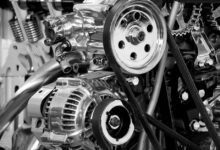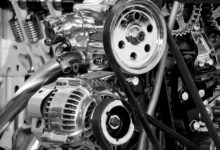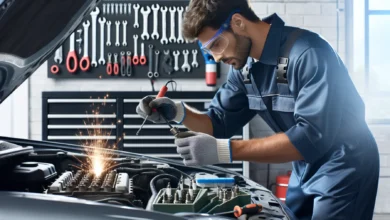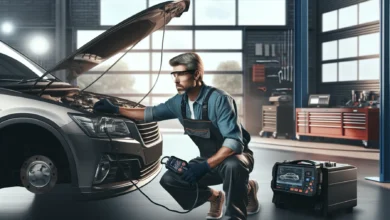New Car Maintenance Schedule: A Comprehensive Guide to Keep Your Vehicle Running Smoothly
Sponsored Ads
Congratulations on your new car! Owning a car is a significant investment, and keeping it in top condition is essential for maintaining its value, safety, and performance. A well-maintained car will also provide you with years of reliable transportation.
One of the most important aspects of car maintenance is following a regular maintenance schedule. This schedule will outline the specific maintenance tasks that need to be performed at specific intervals, such as oil changes, tire rotations, and brake inspections. By following the recommended maintenance schedule, you can help prevent costly repairs down the road and extend the life of your car.
In this article, we will provide you with a comprehensive new car maintenance schedule that you can follow to keep your vehicle running smoothly for years to come. We will also discuss the strengths and weaknesses of following a new car maintenance schedule and answer some frequently asked questions.
The Importance of Following a New Car Maintenance Schedule
There are many benefits to following a new car maintenance schedule. Some of the most important benefits include:
- Prevents costly repairs: By following a regular maintenance schedule, you can help prevent costly repairs down the road. This is because regular maintenance can help identify and fix small problems before they become major ones.
- Extends the life of your car: A well-maintained car will last longer than a car that is not properly maintained. This is because regular maintenance can help keep your car’s components in good condition and prevent them from wearing out prematurely.
- Improves safety: A properly maintained car is a safer car. This is because regular maintenance can help ensure that your car’s brakes, tires, and other safety components are in good working order.
- Maintains your car’s value: A well-maintained car will hold its value better than a car that is not properly maintained. This is because a well-maintained car is more likely to be in good condition and free of major problems.
The Weaknesses of Following a New Car Maintenance Schedule
While there are many benefits to following a new car maintenance schedule, there are also some weaknesses to consider. Some of the most common weaknesses include:
- Can be expensive: Following a new car maintenance schedule can be expensive, especially if you have your car serviced at a dealership. However, the cost of regular maintenance is typically much less than the cost of major repairs.
- Can be time-consuming: Taking your car in for regular maintenance can be time-consuming, especially if you have a busy schedule. However, there are many ways to make it more convenient, such as scheduling appointments online or dropping your car off at a service center that offers valet service.
- May not be necessary: If you only drive your car a few thousand miles per year, you may not need to follow a new car maintenance schedule. However, it is still a good idea to have your car serviced at least once a year to ensure that it is in good condition.
New Car Maintenance Schedule
The following is a comprehensive new car maintenance schedule that you can follow to keep your vehicle running smoothly for years to come. This schedule is based on the recommendations of most major car manufacturers.
| Mileage | Maintenance Task | Importance |
|---|---|---|
| Every 3,000-5,000 miles | Oil change and filter replacement | Essential |
| Every 5,000-7,500 miles | Tire rotation | Important |
| Every 10,000-15,000 miles | Brake inspection | Important |
| Every 15,000-20,000 miles | Cabin air filter replacement | Important |
| Every 30,000-45,000 miles | Spark plug replacement | Essential |
| Every 50,000-60,000 miles | Timing belt replacement | Essential |
| Every 75,000-100,000 miles | Transmission fluid change | Important |
Frequently Asked Questions
Here are some of the most frequently asked questions about new car maintenance schedules.
What is the most important maintenance task?
The most important maintenance task is an oil change and filter replacement. This task should be performed every 3,000-5,000 miles to ensure that your engine is properly lubricated and free of contaminants.
How often should I rotate my tires?
You should rotate your tires every 5,000-7,500 miles to ensure that they wear evenly and last longer.
How often should I inspect my brakes?
You should inspect your brakes every 10,000-15,000 miles to ensure that they are in good working order and free of any leaks or damage.
How often should I replace my cabin air filter?
You should replace your cabin air filter every 15,000-20,000 miles to ensure that it is clean and free of allergens and dust.
How often should I replace my spark plugs?
You should replace your spark plugs every 30,000-45,000 miles to ensure that they are functioning properly and providing your engine with the necessary spark to ignite the fuel.
How often should I replace my timing belt?
You should replace your timing belt every 50,000-60,000 miles to ensure that it is not worn or damaged and that it is functioning properly to prevent engine damage.
How often should I change my transmission fluid?
You should change your transmission fluid every 75,000-100,000 miles to ensure that it is clean and free of contaminants and that it is functioning properly to prevent transmission damage.
Conclusion
Following a new car maintenance schedule is one of the most important things you can do to keep your vehicle running smoothly for years to come. By following the recommended maintenance tasks, you can help prevent costly repairs, extend the life of your car, improve safety, and maintain your car’s value. While there are some weaknesses to consider, the benefits of following a new car maintenance schedule far outweigh the drawbacks.
If you have any questions about your car’s maintenance schedule, be sure to consult your owner’s manual or contact your local dealership.
By following these tips, you can keep your new car running smoothly for many years to come.










